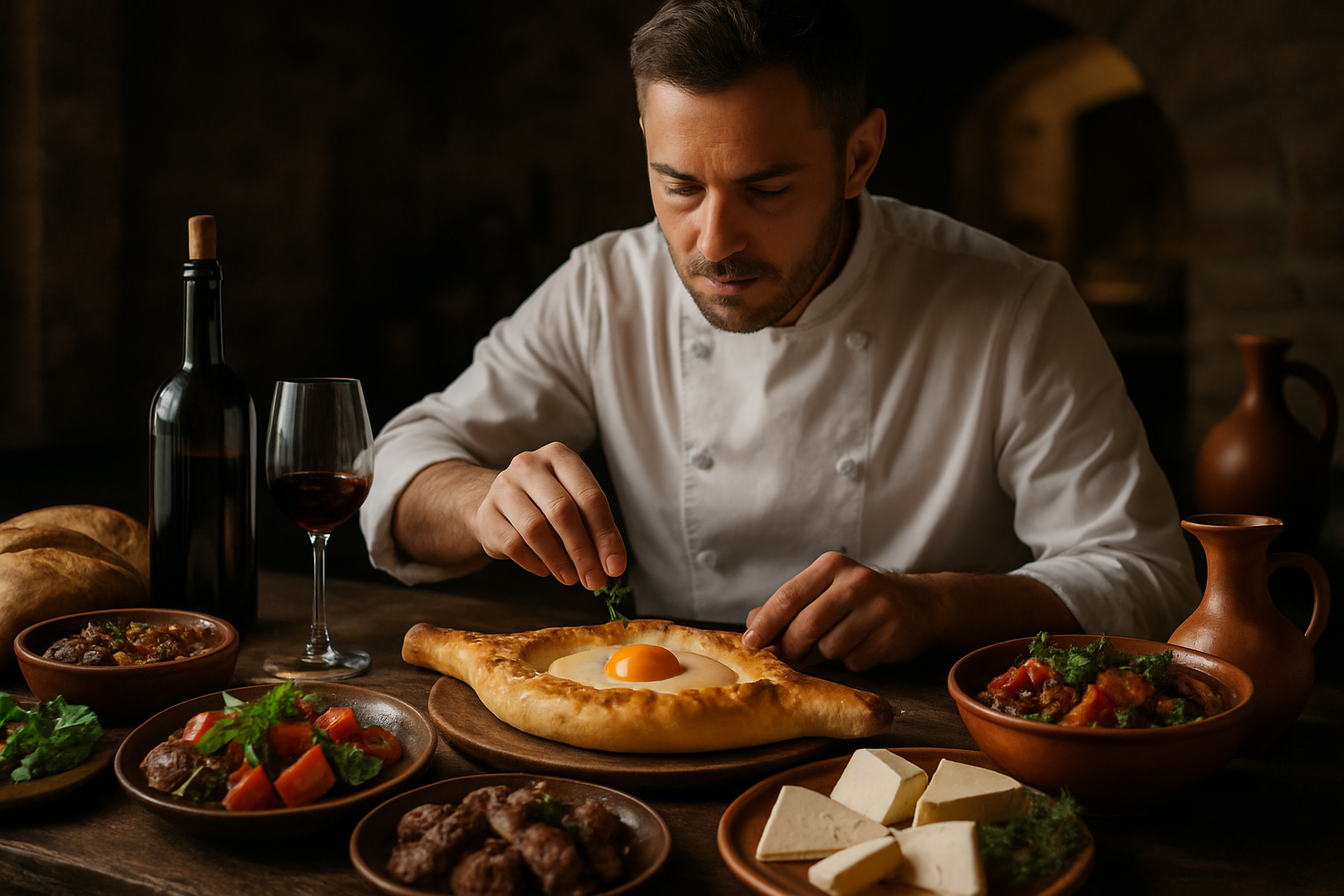Culinary Alchemy: Transforming Humble Ingredients
Elevate your cooking game with the art of culinary alchemy. Discover how to turn everyday ingredients into gourmet masterpieces, impressing guests and satisfying your taste buds. From simple pantry staples to forgotten vegetable scraps, learn the secrets of transforming the ordinary into extraordinary culinary delights.

Unlocking Flavor with Unexpected Pairings
One of the most exciting aspects of culinary alchemy is the discovery of unexpected flavor pairings. By combining ingredients that may seem incompatible at first glance, you can create dishes that tantalize the taste buds and challenge preconceptions. For example, the earthy sweetness of roasted beets can be beautifully complemented by the tang of citrus and the creaminess of goat cheese. Similarly, the addition of a pinch of salt to chocolate desserts can enhance their richness and complexity. Experimenting with contrasting flavors, textures, and temperatures can lead to truly memorable culinary experiences. Don’t be afraid to push boundaries and trust your palate – some of the most iconic dishes in gastronomy were born from unconventional pairings.
Elevating Texture Through Technique
Texture plays a crucial role in the enjoyment of food, and mastering techniques to manipulate texture is a key aspect of culinary alchemy. Simple ingredients can be transformed into entirely new experiences through methods like dehydration, fermentation, or spherification. For instance, by dehydrating thinly sliced fruits, you can create crisp chips that add a delightful crunch to salads or desserts. Fermenting vegetables not only enhances their flavor but also introduces a complex, tangy texture that can elevate any dish. Even basic ingredients like eggs can be transformed – by separating and whipping egg whites, you can create airy meringues or fluffy soufflés that seem to defy gravity. By focusing on texture, you can turn ordinary ingredients into extraordinary culinary creations that engage all the senses.
The Art of Repurposing Leftovers
One of the most powerful forms of culinary alchemy lies in the creative repurposing of leftovers. Instead of viewing yesterday’s meals as mere reheats, consider them as building blocks for entirely new dishes. Leftover roast chicken can be shredded and transformed into a flavorful filling for tacos or a hearty addition to a comforting soup. Day-old rice becomes the perfect base for a crispy, savory fried rice dish. Even vegetable scraps can be given new life – carrot tops can be blended into a vibrant pesto, while potato peels can be crisped up into addictive chips. By approaching leftovers with creativity and resourcefulness, you not only reduce food waste but also challenge yourself to create exciting new meals from what’s already in your kitchen.
Transforming Techniques for Everyday Ingredients
Mastering transformative cooking techniques can elevate even the most basic ingredients into gourmet creations. Take the humble cauliflower, for example. By roasting it whole with spices, it becomes a stunning centerpiece dish. Pureeing it creates a silky smooth soup base, while grating and pan-frying turns it into a low-carb rice alternative. Similarly, beans can be transformed from a simple side dish into a luxurious dip, a hearty burger patty, or even a rich, fudgy brownie base. Learning techniques like sous vide cooking, smoking, or molecular gastronomy methods can open up a world of possibilities for transforming everyday ingredients. The key is to approach each ingredient with an open mind and a willingness to experiment, allowing you to discover new textures, flavors, and presentations that can turn the ordinary into the extraordinary.
Useful Tips & Facts
• Blanching vegetables before freezing helps maintain their color and texture.
• Bruised fruits make excellent additions to smoothies or baked goods.
• Aquafaba, the liquid from canned chickpeas, can be whipped into a vegan egg white substitute.
• Overripe avocados can be mashed and frozen for future use in smoothies or as a hair mask.
• Infusing oils with herbs or spices is an easy way to add complex flavors to simple dishes.
• Pickling is a quick and easy method to transform and preserve fresh vegetables.
• Stale bread can be revived by spritzing with water and briefly toasting in the oven.
In conclusion, culinary alchemy is about more than just cooking – it’s a mindset that encourages creativity, resourcefulness, and a deep appreciation for the potential of every ingredient. By embracing this approach, you can transform your kitchen into a laboratory of flavors, textures, and culinary innovation. Remember, every great chef started as an experimenter, unafraid to try new combinations and techniques. So, the next time you look at your pantry or refrigerator, see it as a treasure trove of possibilities waiting to be unlocked. With a bit of imagination and the willingness to take culinary risks, you can turn even the most humble ingredients into dishes that surprise, delight, and nourish both body and soul.




